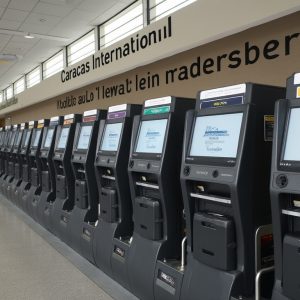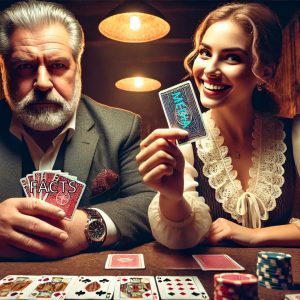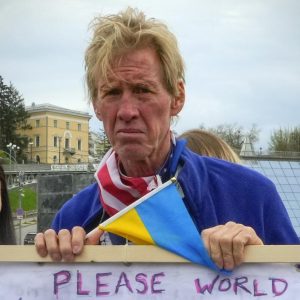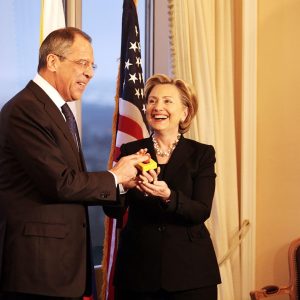AH, THOSE PLACES
“What does it actually mean to be in a place? We all move here and there at various times during our lives. Some of these locations, overlapping as they do with particular events or moments, assume extraordinary significance for us. We feel that we would be different people if we had not spent one summer out there or moved to that town for three years a few decades ago. We understand that places are important to us without always paying attention to the crucial role that time also plays. When you were there can matter enormously, both because of the historical moment of the place and who you happened to be just when you were there. A place can shape you—and you can shape the place—without you being aware of it. This is as true for people of the past as it is for us. We can follow someone’s path through the scattered traces he or she left behind … and look at the ripples these passages propagate through their world, like those triggered by a rock tossed into a pond.”
Michael D. Gordin
Author, Einstein in Bohemia1
Have you ever started reading a book (one which you took a chance on in the bookstore at that) and it turned out to blow your socks off from the very first page? That happened to me this week. I found the book hidden on the shelf, knew nothing about the author or the topic—I didn’t even know Einstein taught two years at a university in Prague before World War I—but just had this feeling that I was supposed to read it.
What a choice!
Michael Gordin’s book, Einstein in Bohemia, provided me ideas for five future missives in the introduction alone (“A Spacetime Interval”). Just as Einstein’s brief interlude in fin-de-siecle Prague formed an important part of his thought processes, so I have come to see the importance of “places” in my life. The missive that follows—rooted in the opening quote above—reflects how I have come to realize how the cumulative experiences of the places I’ve been, and the people I have met during life’s journey, have made me the person I am today.
For better or worse.
The closing thought of the aforementioned quote from the book—that each of us create ripples in the time-space around us that we may not recognize at the time—reminds me of Ony Leonard. Ony was a fundraiser deluxe for Alice Lloyd College many years ago. He had the softest heart of any individual I’ve ever known. When I invited him to speak to my Philosophy 300 class, he wept when talking about the ideas of the college, and told the students that each of them were special pebbles thrown into a pond, with the ripples affecting other individuals in our lives. Richard Kennedy—the “Music Master”—and I attended Ony’s funeral in California. Dementia and Alzheimer’s in his old age had changed Ony’s personality: but not his soul, or my fond memories.
I don’t propose to suggest that my experience in regard to “places” has been typical: in many ways I have been singularly blessed by God to visit so many remarkable places and forge so many lasting friendships. The bulk of the places listed below stemmed from my Vietnam-era travel experiences in the Air Force, my career in the intelligence community or research trips during my college teaching years. Needless to say, I am also looking to exploring many special “places” in the future, after Imogene retires from teaching in mid-June (2022).
Indeed, the hardest thing about compiling the following list of “places” was not so much what “places” should be included but rather what places to omit. I started out making a list of ten, it grew to fifteen, and just as easily could have been twenty-five. I returned to five, only because I had to cut it off somewhere …
I received encouragement to compile this list after a brief conversation with my former pastor Amos Dodge and his wife Sue during a weekend birthday luncheon. “You know Jeemes,” Amos said, “you have been blessed to travel to so many places.” (This is from a man who extensively travels to Africa and India to support missionary activities as well as traveling regularly with his wife, who formerly sang gospel music with the Gaithers).
*****
“A nation is great not by its size alone. It is the will, the cohesion, the stamina, the discipline of its people and the quality of their leaders which ensure it an honorable place in history.”
Mr. Lee Kuan Yew, 1963
The first place on my personal list: Singapore.
Of course.
Singapore is a sovereign island city-state (less than 282 miles in area) in maritime Southeast Asia with a population of almost 5.7 million people (2020). What I like about Singapore is that everything is clean, orderly and efficient. Things work! I have been there at least a dozen times over the years and served there in the U.S. Embassy for a couple years. I love the city-state: from the old colonial-era Raffles Hotel, to the ubiquitous tropical flowers on every overpass, to the bizarre Tiger Balm Gardens, to the majestic orchid collection at the Botanical Gardens (near the Embassy), to the bustling modern stores on Orchard Road, to the expat hangouts at Holland Village, to chicken rice, to the skyscraper-studded skyline of the Central Business District as viewed from the marina, to musty old Taoist temples, to the highly efficient subway system, to the subterranean urban world, to the quaint riverside restaurants along one of many Quays, to the nostalgic British colonial buildings and polo fields, to the large Christian megachurches; yes, even to the pungent smells of durian stalls. For me, Singapore is the ideal fusion of Chinese work ethics, British colonial legal systems, Malay energy and Indian (subcontinent), blending different cultures, cuisines, and possibilities. Indeed, the high-rise communities that dot the Singaporean landscape, by law, reflect the demographic mix of the city-state.
I could say much, much more. Singapore plays a prominent role in my missives and futuristic novels.
As a final note, Imogene and I hope to return to Singapore for 2-3 months after she retires.
*****
“Berlin is a city of leafy boulevards, grand Neoclassical buildings, world-class art, glitzy shopping arcades, and funky graffitied neighborhoods, with gourmet street food. It’s big and bombastic—the showcase city of kings and Kaisers, of the Fuhrer and 21-st century commerce.”
Rick Steves
My second “place” choice is Berlin.
My love for Berlin caught me by surprise.
I traveled to the German and Prussian historic capital on a research trip several years ago with my sister. I am anxious to return. At the time, I was retracing the steps of a dashing, enigmatic and shadowy Ussuri Cossack military leader and warlord who was the topic of my Master’s Thesis biography: Major General, Prince Pavel Rafalovich (Mikhailovich) Bermondt-Avalov (1877-1973). Bermondt-Avalov participated in many of the seminal events of the twentieth century: he fought in the Russo-Japanese War, World War I, was in St. Petersburg during the stormy days of the Bolshevik Revolution, and led a Russian volunteer army—supported by German Freikorps elements—in the Baltics during the Russian Civil War. He emigrated to Germany during the early 1920s, became enamored with Hitler’s National Socialist (Nazi) movement and established a copycat organization. After Hitler’s ill-fated invasion of the Soviet Union, Bermondt-Avalov became dispensable, imprisoned in a concentration camp and later deported. He settled in Belgrade and later moved to New York, where he died.2
During the research trip I traced the steps of Bermondt-Avalov to Salzburg, Coburg, and finally Berlin. At that time, Berlin was a divided city. My sister Debbie and I took a train across Communist East Germany to get to the city. I will never forget that train ride: the communist countryside was gray, somber and lifeless; our train sped up at every crossroad, all of which, in turn, were guarded by police and dogs; and there was also the palpable hatred of the conductor that punched my ticket—after a long delay—and scanned my American passport. All that changed when we pulled in to West Berlin where there was an atmosphere of energy, vibrant life and colorful flowers.
If I was king-for-a-day, I would go back in time and take every leftist-thinking young person on that trip. Perhaps it would break the scales off the eyes of those who have fallen under the spell of our left-leaning media and closet academics—asserting the neo-Marxist big lie: that all capitalists, non-minorities and Christians are oppressors. Far leftist ideas require an oppressor class. As I saw with my own eyes, there is a very real difference between the systems.
While in Berlin, we saw the jack-booted Soviet guards near the closed Brandenburg Gate, the wall—the only wall in history to keep people in rather than out—Checkpoint Charlie, and the no-man’s land where hundreds of people were shot down attempting to escape from East Germany.3
How quickly we forget.
What happened? Luc Besson describes it best: “It’s always the small people who change things. It’s never the politicians or the big guys. I mean, who pulled down the Berlin Wall? It was all the people in the streets. The specialists didn’t have a clue the day before.”
*****
“Bangkok, though, is a rejuvenating tonic; the people seem to have found the magic elixir. Life, a visitor feels, has not been wasted on the Thais.”
Bernard Kalb, NYT, 1961
My third “place” is Bangkok.
I first visited Bangkok in 1971, during the Vietnam War timeframe, on a R&R (rest and recuperation) trip. I found the place exotic, erotic and exciting. The excitement started early. My friends and I had rented a taxi to take us from the airbase to Bangkok—at 3:00 in the morning, we almost slammed into a water buffalo lumbering across the highway.
One of my favorite memories from that first trip was a visit to a Bangkok nightclub. The building was crammed full of tables, alcohol, dancing couples and beautiful Thai women (and Thai women, by any standard of measure, are indeed beautiful). Late at night, probably one or two in the morning, a gong rang out and the dance floor was cleared, a makeshift boxing ring was set up, and a full-contact Thai-style kickboxing match ensues. Nightclub patrons, in a chaotic frenzy of betting and shouts of support, picked one of the boxers. As soon as the bout was decided, the gong sounded again, the ring was pulled down and the dancers and barflies mingled again, as though reacting to a well-seasoned script. Then, just as my mind was wrapping itself around the spectacle I had just witnessed, the gong rang out again, the dance floor was cleared, and I found myself watching my first cock fight. It was a bloody, frenetic affair: two large roosters, trained for the pit, with their metal spurs tearing in to each other.
I will never forget that evening—it was quite a cultural wake-up call for a naive teenager from agrarian southwestern Ohio.
Other memories from that trip: first-hand witnessing blatant police corruption; a steamy, hot and humid voyage up the chocolate-brown waters of the Chao Phraya River (the so-called “river of kings”), replete with floating markets of vendors selling food, flowers (and further up-river) uncut jewels of every description; adventurous tuk-tuk rides on the crowded city streets; the Grand Palace complex and the Wat Phra Kaeo (housing the jade/emerald Buddha); Wat Pho—the temple of the Reclining Buddha; and, Wat Traimit, the temple of the Golden Buddha.
Time and space constraints keep me from saying more: I have addressed Bangkok, spirit-houses, and Buddhism in a number of previous missives including, “Sweatin’ At Shwedagon” (summer 2020), “Regarding the Matter of Today’s Idols” (Oct. 2020), and “From the Wat to the Pool” (Aug. 2021).
For those wishing to read novels set in Bangkok’s seamy underside, see the collection of novels by one of my favorite authors, Christopher G. Moore, and his expat private-eye protagonist Vincent Calvino.
During my Agency years, I visited Bangkok several times. I love the mystery and intrigue of the Jim Thompson story (it is always worthwhile to visit his house on the klong and I still have a handful of Jim Thompson silk ties); boat rides down the smelly klongs through tropical vegetation and hidden wats; incredible jazz clubs downtown; and yes, the expat-heavy red-light districts of Patpong and the Cowboy District.
As a final note, I traveled to Bangkok during the controversial years of Prime Minister Thaksin Shinawatra (2001-2006), and his populist Thai Rak Thai Party (Thaksin was overthrown by a military coup in mid-September 2006), personally witnessed the street unrest and violence of his “red shirt” movement—where chaos and burning piles of trash turned once tourist-heavy shopping areas into a virtual no-man’s land. Years later, Thaksin’s younger sister Yingluck was elected as Thailand’s first female Prime Minister (2011-2014), who was subsequently removed from office by a Constitutional Court decision.
(From 2014 to mid-2019, Thailand was ruled by a military junta—which repealed the constitution, declared martial law, banned political gatherings, and imposed internet censorship. The country has more recently transitioned to military-dominated, semi-elected government and massive youth protests have been suppressed and declared illegal because of COVID restrictions).
I’m sure Bangkok under quasi military rule is a much different place.
*****
“Amsterdam has more than 150 canals and 1,250 bridges, but it never seems crowded, nor bent and bitter from fleecing the tourist.”
Julie Burchill
A few years ago, I visited Amsterdam for the first time.
It won’t be the last (pandemic willing).
Amsterdam was the last stop on a tour—led by my good friends Fred and Rachel Mullinax—that had included a wonderful visit to Paris, the Normandy beaches, Bastogne, the Ardennes, and American veteran cemeteries scattered throughout Belgium and Luxembourg. On one memorable stop, we conducted a prayer tribute to eleven Black soldiers massacred by the Nazis and buried near Wereth, Belgium (the mother of one of the soldiers worked for one of the couples participating in the tour). It was a profound spiritual experience for all of us.
This experience, and many others besides, made it the trip of a lifetime!
Amsterdam—our final stop—was, and is, a really neat city.
For sure, it is a bicycle city. I have never seen so many bikes. Indeed, as a recent article in The Guardian observes, Amsterdam is a city owned by cyclists: “the city is equipped with an elaborate network of cycle-paths and lanes, so safe and comfortable that even toddlers and elderly people use bikes as the easiest mode of transportation.”4 It is estimated there are over 880,000 bikes in Amsterdam (and almost 150 bike shops),5 and while I was walking on the streets of the city, my head was on a swivel the whole time.
The still beautiful and lavish Dutch houses on the city canals reminded me of my teaching days (as a TA) at Texas Christian University. It was my first experience teaching college students the second half of World History. As I recall, I spent an inordinate amount of time on the Dutch East Indies Company and the heyday of the Dutch Empire. (I subsequently learned that it typically takes five semesters of teaching the same college course before one gets a true handle on the pace and timing of the material to be covered in any semester). At any rate, the Dutch East Indies Company, a chartered multinational corporation established in 1602—by a government directed consolidation of several rival Dutch trading companies—is believed to be the largest company to have ever existed in history. Granted a 21-year monopoly on the lucrative spice trade by the Dutch government with trading outposts in India and Indianized Southeast Asian countries, the trade generated unprecedented wealth for the Dutch and spawned modern capitalism. The lavish homes I observed while on the canal cruise are lingering testimonies of this wealth (according to one estimate, some 6,750 buildings built from the 16th to the 18th century—the height of the Dutch Republic—remain in the city).
During our short stay in Amsterdam, I tried to squeeze as much out of the experience as possible: from the emotionally-moving Anne Frank House on the Prinsengracht; to the picturesque West Church (Westerkerk), the Renaissance church located nearby with its “Langer Jan” tower (the tallest in the city); to the 160 canals (grachten) and live-in houseboats; to the beautifully maintained houses; to the breathtaking wall-sized oil paintings of the Dutch masters at the Rijksmuseum (the National Museum). Indeed, there were so many awe-inspiring artworks at the Museum that Glenn Stribling and I had to be chased out at closing time.
But my most enduring memory was sitting on a bench alongside one of the city’s many canals during the late afternoon and eating a hotdog from a nearby food kiosk with my good friend Larry Lyles. It was the best-tasting hot dog I’ve ever had!
*****
“If you go to Tokyo, I think it becomes very obvious that there’s this almost seamless mixture of popular culture and Japanese traditional culture.”
Kazuo Ishiguro
The fifth, and final, “place” of this missive is Tokyo, Japan.
I have been to Tokyo and handful of times over the years, but my first trip was by far the most memorable. I visited the city as the first stop by our all-Okinawa softball team to Japan. After a brief stop in Tokyo—we stayed in military barracks on a U.S. base near Tokyo and had a day to sightsee—before taking a train to Yokota Air Force Base at the far northern end of Honshu, the main island of Japan. While there, I ate a quarter pounder at the world’s largest McDonald’s on the Ginza, visited the royal palace grounds, and rode the subway (where uniformed sentries were stationed to shove in riders to the crowded cars before the doors closed).
Tokyo was a unique cultural experience (Okinawa was far more Americanized).
One experience, in particular, stands out. Late in the day, I noticed that my wallet was missing. Almost all my money—enough to cover the costs I anticipated from the trip—was in that billfold. So, I retraced my steps from earlier that day. I remembered using the bathroom in one busy metro station. (At that time, there were no toilet bowls as we are accustomed to using in the West, rather there was a trough built into the floor and you squatted to do your business, pulled a chain to rinse the fecal matter away and into the sewer “binjo ditches” that lined both sides of the streets—as you can imagine, during hot summer days there was a distinct smell). At any rate, when I squatted down, my billfold popped out of my pocket. That was several hours earlier. When I opened the door of the stall, my wallet was still there. I don’t know how many hundreds of Japanese men had used the toilet in the interim. Today’s population in the Greater Tokyo area is almost 14 million people, and it had almost as large a population back then. It’s a cultural morality thing. Can you imagine dropping a billfold—stuffed with money—in a restroom in New York or Los Angeles? And it still be there, undisturbed, several hours later?
Our train ride from Tokyo to Misawa AFB the next day was another interesting experience. Somehow, the seats in our car were double-booked. A train car full of Japanese college students had tickets to our seats, or we had tickets to theirs, and a tense stand-off ensued. Eventually, cooler heads prevailed and all ended up sharing our food and drinks as the Japanese landscape rolled by. It was a remarkable case study in human relations.
In Misawa, our softball team members had the choice of staying in the barracks or spending time with a local Japanese family. I chose the latter. I stayed with a wonderful Japanese family: I couldn’t speak Japanese and they didn’t speak English, we communicated through grunts, nods, smiles and hand gestures. They gave me a blue kimono, and a rice mat to sleep on (I’ve never had two nights sleeping better). They shared their meals with me. On television I watched Japanese baseball games (umpires with white gloves called the balls and strikes, fans in the stands used clapper devices to make noise).
Over the years, whenever I talk about Japan in my Asian history classes I relate this personal experience. Indeed, in one of the most extraordinary 50-year transitions in world history, Japan went from being a feudal power to a major power—what historians call the “Meiji Restoration”—and this change was made possible largely by the sacrifices of the Japanese people.
Indeed, whenever I teach about Japan’s experience in World War II (Tokyo’s planning was based on a two-year war and counted on America’s reluctance to fight a prolonged war with casualties), the disastrous decisions by its wartime military leaders, the atomic bombs, and subsequent occupation by American forces led by MacArthur, I include one of my favorite quotes. It was cited in William Craig’s book on the fall of Japan (as I recall) and is contained in the letter from an elderly grandmother, and war survivor, to her teenage daughter. In essence the letter tells the young girl that she didn’t have to fear the Americans for acts of violence, or rape (as wartime propaganda had warned the populace), but rather the main danger was to be found in “the American soldier’s insatiable desire to be loved.”
That simple but profound observation, in my view, separates us from the rest of the world.
*****
As a final note, my five choices of “places” were the end result of a difficult process of elimination. My “honorable mention” list includes, among others: Hong Kong (I covered the sad fate of the former British crown colony in my last missive); Chiang Mai, Thailand (the true hidden gem of Southeast Asia); Honolulu, Hawaii (my favorite restaurant in the universe is a steakhouse with a veranda setting that overlooks the Waikiki beaches on one side and Diamond Head on the other); Manila, Philippines (including a historically insightful boat trip to Corregidor); Sydney, Australia (the Quay there is perhaps the most beautiful manmade setting in the world); Wellington, New Zealand (as beautiful as San Francisco but without the crazies); Hanoi, Vietnam (oh do I have stories about this visit); and, Monterey, California (from Fisherman’s Wharf to old Cannery Row).




